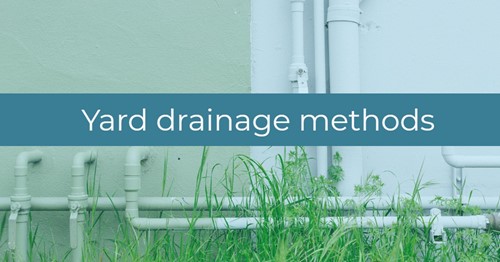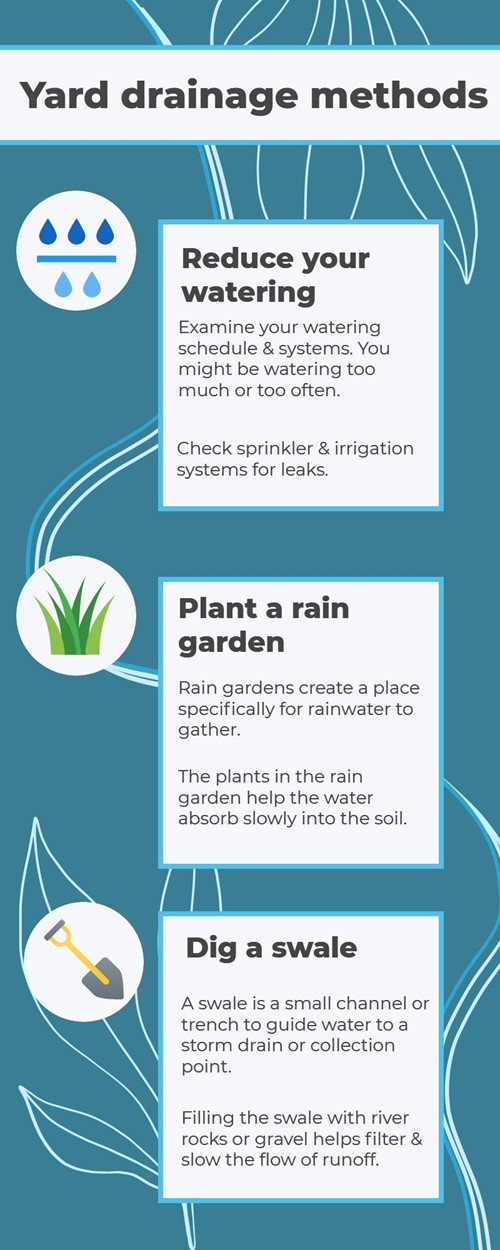
If your yard is full of puddles, soggy soil and waterlogged plants, it’s time to invest in better yard drainage. Depending on the cause and severity of the issue, there are plenty of DIY options you can handle without spending a fortune. Understanding common causes leading to drainage problems and how they affect your yard will go a long way in helping you handle the extra water.
To help, here are some basic tips and methods for improving yard drainage:
You can often solve yard drainage issues by changing your current gardening habits and systems. For example, having drip irrigation or sprinklers that turn on and off automatically is a common cause of an over saturated yard. If you water your garden manually, consider going longer in between watering trips to see if the situation improves.
It’s also important to check any existing irrigation or sprinkler systems for leaks.
If your yard has poorly drained soil that collects and retains moisture, try setting up a rain garden to capture and gradually absorb runoff. A rain garden helps support the plant life in your yard while taking care of the soil. The right combination of plants arranged in a shallow basin will help improve soil drainage and filter excess water from your yard.
A swale is an artificial creek or channel used to route water away from problem areas in your yard. By digging a trench and filling it with gravel and river rocks, you can create a dry creek bed to direct the natural flow of rainwater and other excess water. This keeps it out of your soil and helps improve the overall moisture balance of the yard.

There are many methods for improving yard drainage. These three options are some of the simplest DIY solutions that don’t require spending a fortune on landscape renovation. However, if your drainage issues are serious, it’s always best to consult a professional for an expert opinion.